It was created in mysterious circumstances. He later went missing twice. It seemed like we would never get it back. It has even been speculated that it burned down in the villa of a Nazi criminal. And yet he finally found himself… in the most unexpected place.
The turn of the seventies and eighties of the nineteenth century was exceptionally fertile for Jan Matejko. In his studio at Floriańska Street, numerous works were created to commemorate the splendor of the Jagiellonian Poland.
Among them were "The Congress of the Jagiellonian Kings with Emperor Maximilian I at Vienna in 1515", "Zofia Szczecińska in the camp of Kazimierz Jagiellończyk" and "The Prussian Homage". The latter painting was painted by Matejko on the occasion of the 350th anniversary of the memorable event in the last decades of the century. The artist also considered the baptism of Jagiełło's son, Władysław Warneńczyk, which took place 450 years earlier in the Wawel Cathedral, to be worthy of due commemoration.
Nobody knows anything
How is "The Baptism of Władysław Warneńczyk" different from other works of the Krakow master created at that time? Most of all ... the silence surrounding him. It is strange, but it is in vain to look for any information about it. There is no mention of him at least in the monographs devoted to the Krakow artist and in the painter's private correspondence.
Published four years after Matejko's death, Stanisław Tarnowski's book is perhaps the most detailed work summarizing the work of the former director of the Krakow School of Fine Arts. Yet it doesn't even contain a single sentence about the mysterious painting! Similarly, Mieczysław Treter in his work entitled “Matejko. The artist's personality, creativity, form and style "did include a reproduction, but otherwise he did not mention" Baptism "even once. The painting was not mentioned until 1958 in the memoirs of the artist's wife's niece. Now Maciej Siembieda has returned to the subject in his novel "444".
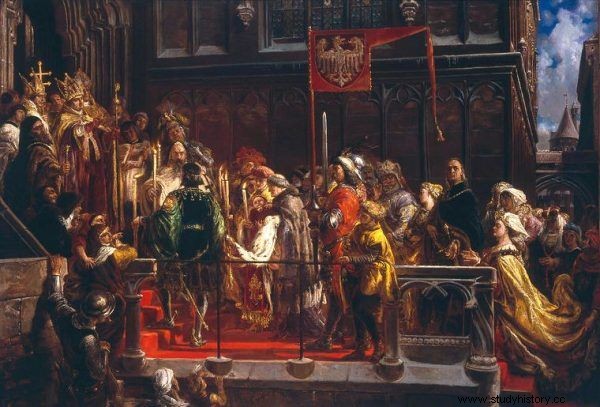
"The baptism of Władysław Warneńczyk 18. II. 1425 ". A forgotten masterpiece.
To this day, it is not known why the publications concerning the painter spared letters on this particular work. It would seem that it deserves much more attention. However, this is not the only unknown. We can find more puzzles by exploring the artist's unusual creative process and analyzing the content of a forgotten painting.
The precedent of patronage
As is well known, Matejko was considered a conceited artist . He avoided portraying capricious models, wanting to leave behind the original ideas of individual characters. The only exception was his wife, who was privileged to pose by the Krakow champion. The outstanding artist, as a rule, did not accept commissioned works. The "Baptism of Varna" was, however, unique in these respects and differed significantly from the rest of the paintings created at Floriańska.
But from the beginning. Jan Głębocki, a descendant of an illustrious family, in whose generations numerous chancellors, archbishops and statesmen had distinguished themselves, while in Krakow, he found out by accident about the artistic intentions of Master Jan. He was especially interested in the fact that the painter planned to immortalize in his painting the person of Bishop Mikołaj Głębocki. John's ancestor, governor of Pope Martin V, once served Prince Władysław for the sacrament.
Soon there was a meeting between the painter and the aristocrat. It must have been successful, because Matejko agreed not only to portray the Głębocki family in the picture, but also to donate the completed work of their excellent collection. This turn of events clearly shows that in this single case we can confidently seek patronage.
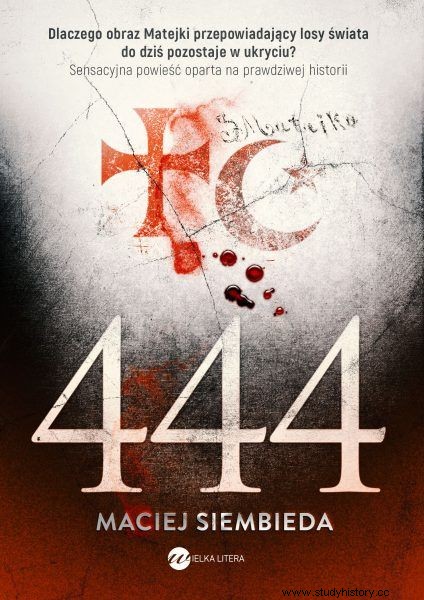
The painting, which was created in such special circumstances, is maintained in the style typical of the artist. It is dominated by crowded figures - so often criticized -. It is characterized by a complete lack of space and a deficit of landscape. The composition of the depicted scene is static. The central figure of the retinue captured in front of the portal of the Wawel cathedral is the dignified Bishop Nicholas who was carrying the prince for baptism. His beauty was given by Jan Głębocki.
Right behind the church dignitary there is a court page, confusingly resembling one of the sons of the Głębocki family. Natalia Głębocka, wife of Jan, was portrayed by Matejko as Zofia, the fourth wife of Jagiełło and mother of Warneńczyk. He stands in a group at the side of the monarch. Among the entourage following her, we can find another page and three ladies of the court, whose features undoubtedly corresponded to the images of the other four children of Jan and Natalia.
Why did this one, only time, an artist depart from the rules he adopted? It is doubtful that he is driven by a banal need of heart. There are no indications of any reasons for this surprising decision by Matejko . We can only guess that Matejkowa, née Giebułtowska, was not satisfied with the loss of the privilege ...
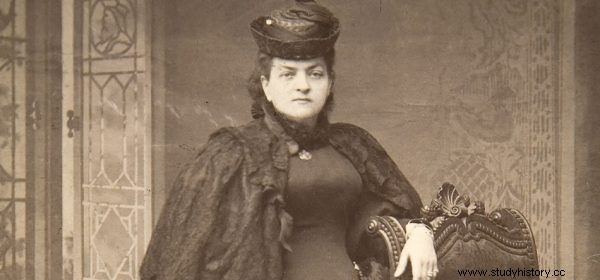
Teodora Matejko. Usually she was her husband's only model. However, in the case of "Baptism" it was different. Why?
First disappearance
It is not only the creation of "Baptism" that is mysterious. The subsequent fate of the work is full of even more mysteries. We know for sure that the painting was sent from the studio in Kraków to the property of the Głębocki family, Łaszek in the Wołyń region. There was an impressive collection of Polish paintings. The walls of the small palace, erected near the manor house, were adorned, next to old family portraits, with canvases of prominent artists, such as Malczewski's "Użdok" or Wyczółkowski's "Four in a mess". Matejko's painting was a decoration of the "coral lounge" until 1916. This is how Antoni Urbański described the place in Tygodnik Ilustrowany:
(...) From the entrance hall you passed to a huge dining room, lined with oak paneling, where a crystal spider hung from the ceiling. (...) There were alabaster urns of great value in the adjacent white living room, then there was a living room covered with coral stucco. In it "Baptism of Varna" by Matejko.
During World War I, the Głębocki family decided to leave their family homes and hide their collections within the walls of the bishop's palace in Żytomierz. Father Ignacy Dubowski was to take care of them. The collection survived, and right after the end of the war by the decision of the party authorities of the USSR, the bishops' palace was turned into a museum . The major part of his exhibition were works from the Głębockie's collection.
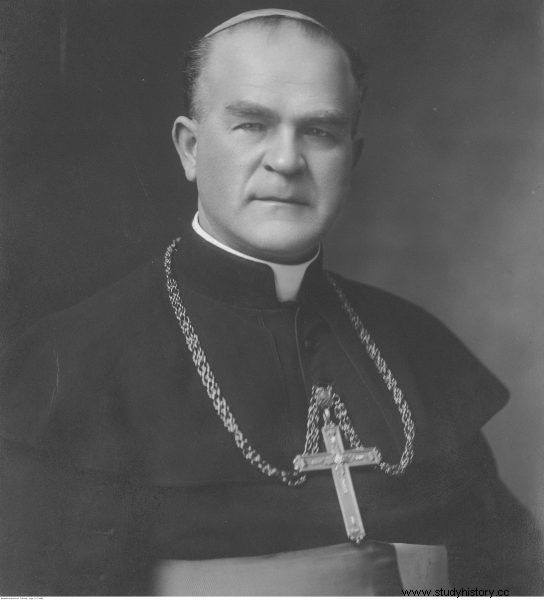
Fr. Bishop Ignacy Dubowski. Was he the one who looked after the "Baptism" during World War I?
However, according to the registers of the newly created institution, there was no "Baptism of Varna" in Żytomierz. This raises a number of questions. Has the painting ever reached the bishop's palace? Or has it "dissolved into thin air" during the transformation of the object? Only one thing is certain. With the end of World War I, Jan Matejko's "The Baptism of Varna" was lost.
Poor prompt
The Głębocki family had to wait twenty years to find the lost canvas. He was hit, as is usually the case in similar situations, by a complete accident. This is how Andrzej Głębocki described the whole situation in his diary:
In 1937 I went with my uncle Jan Mazaraki to the opening of the exhibition of Jan Matejko's paintings at the Zachęta Fine Arts Building in Warsaw. Entering the main exhibition hall, I was surprised to notice the prominent place "Baptism of Varna".
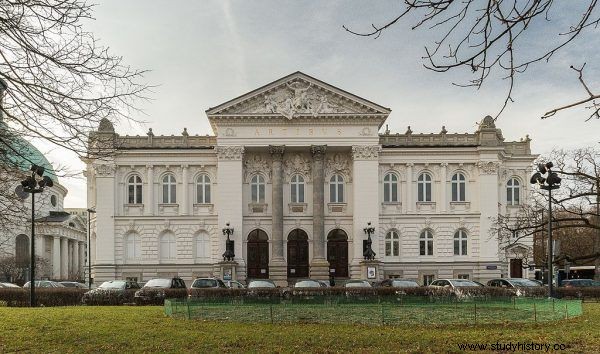
How did the painting end up in the Zachęta Gallery in Warsaw?
The authenticity of the painting was confirmed after consultation with the then director of the Society for the Encouragement of Fine Arts, Mikulicz Radecki. This enabled the prosecution to initiate investigative proceedings. The evidence of ownership necessary to put the canvas on display was shown to the prosecuting authorities of the suspect. It was a Krakow antiquarian and painting dealer, Stieglitz.
As further investigation showed, he purchased the painting for around 50,000 zlotys at the time from a colleague in Prague, Czech Republic. At the request of the prosecutor's office, the Czech authorities soon sent extensive requisitioning material. It clearly showed that the local merchant had purchased Matejko's canvas from another antiquarian, this time from Vienna. And there was no trace of it. How the painting from Łaszki traveled over the Danube has not been established.
Parallel to the prosecution work in Warsaw, the second, behind-the-scenes part of the case was conducted. Stieglitz, fearing the loss of the funds invested in "Baptism", offered the Głębocki family the possibility of redeeming the painting. The amount of the transaction, however, exceeded the financial capacity of the rightful owners and the Treasury of the National Museum, to whom the Głęboccy offered priority in obtaining the painting. The sum of 40,000 was too small for Stieglitz.

Due to disagreement on both sides of the business, the painting remained in the Gallery's deposit. The prosecutor's office started to pursue the property rights already in criminal proceedings. When successive attempts to obtain at least half of the property rights failed, Stieglitz decided to go one step further. In a manner known only to him, he bribed the janitors who guarded the painting protected by the prosecutor's seal. He indicated that they should send him to Kraków in secret from the management of Zachęta. It also happened.
Only a few days passed, and on the orders of the law enforcement apparatus, the sneaky antiquarian was arrested. Unfortunately, during the interrogations, he did not reveal the place where the canvas was hidden. The process that had been set out for him was almost immediately interrupted by another world war. And so the "Baptism of Varna" was lost for the second time. Again for years and without a trace.
Slippery bastards
What was the further fate of Matejko's unique painting? Stieglitz's collection was taken over by the Dutchman Pieter Nicolaas Menten (also known under the names Johann Peter). This famous "Lviv collector" who earned the reputation of a slippery dodger , and the future collaborator came to Krakow after the Soviet aggression against Poland. In 1940, he offered the Nazis his expert services. In Matejko's hometown, he was appointed treuhänder , i.e. a trustee, receivership manager of post-Jewish antique shops. And, as Maciej Siembieda relates in his novel "444", describing the fate of the lost "The Baptism of Warnae", it was during this function that Menten entered into friendship with Stieglitz.
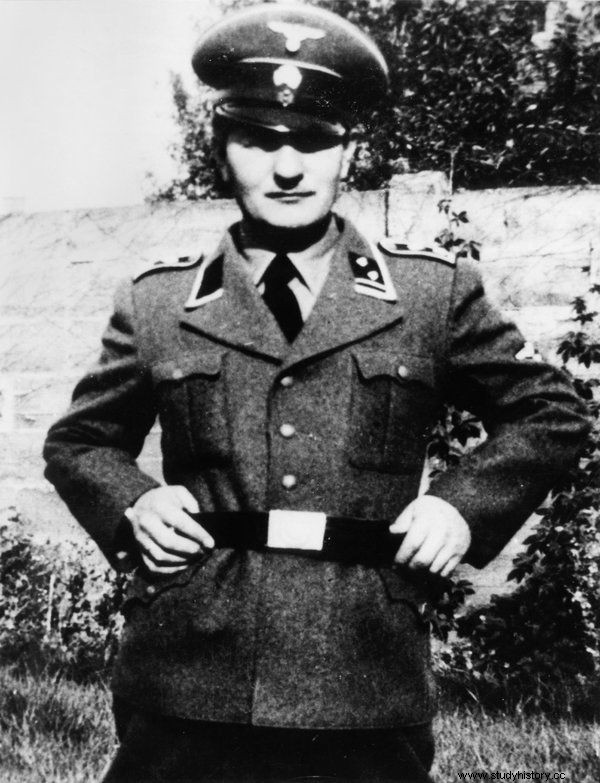
After the Soviet Union's aggression against Poland, Menten quickly established cooperation with the Nazis. Photo from 1941.
The antiquarian Jewish origin made it easier for the Dutchman to take over his collections. In return, Menten allowed his partner to travel to Hungary, from where he safely escaped to Tel-Aviv. The "baptism" most likely shared the fate of other treasures plundered by the trustee and ended up in the Netherlands. In 1943, as many as three wagons full of priceless works of art were transported there from Krakow. It was not the only achievement of the "collector". He was also responsible for the theft of works of art from murdered Lviv professors.
Anyone seen, anybody… understands
After the end of World War II, Menten was quickly captured on May 16, 1945. Unfortunately, due to insufficient evidence of his guilt, the Dutch authorities released him almost immediately. He kept his fortune and jumped to the sixth place among the richest Dutch. It became clear that the works of art he had stolen would never be restored. The families of the rightful owners, be they Poles or Jews, could not count on a return.
Meanwhile, in Poland, the search for "Baptism" continued. The Main Commission for the Investigation of Nazi Crimes in Poland caught up with Menten. Its representatives suspected that the missing painting by Matejko had ended up in a luxurious villa of the "collector" in Blaricum near Amsterdam. They informed Mieczysław Głębocki about it.
However, these were only assumptions. At about the same time, Menten's villa burned down for unknown reasons. Was the painting by Krakow's master Matejko really in a private gallery of a Nazi criminal? Has the fire consumed the "Baptism of Varna"? These questions remained unanswered for a long time.
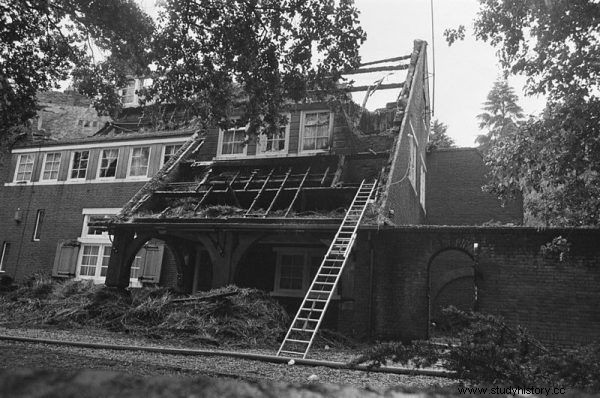
Was "The Baptism of Varna" burned down in Menten's villa?
A breakthrough in the search for the mysterious painting came in 2008. How it happened is told in the novel "444" by Maciej Siembieda. On the 170th anniversary of the birth of Sienkiewicz, the Masovian Museum in Płock opened a photo exhibition inspired by Matejko's work. In addition to numerous competition works, it also included three paintings by Matejko:"Blinded Wit Stwosz with his granddaughter", "Adoption of Jews" and ... "Baptism of Władysław Warneńczyk 18. II. 1425. " All came from the collection of the National Museum in Warsaw!
Why did the lost painting not get fetish after returning to his homeland? Why is the canvas in good condition not exhibited permanently in the building of the National Museum in Warsaw? The management of the Museum excuses itself with the donor's wish, whose dignity it does not intend to reveal. We only know that the mysterious donor died on the eve of the delivery of the documents confirming the ownership of the painting. He also did not belong to the Głębocki family, which actually excludes him from the group of the rightful owners of Matejko's most mysterious work ...
A lot of puzzles here.
